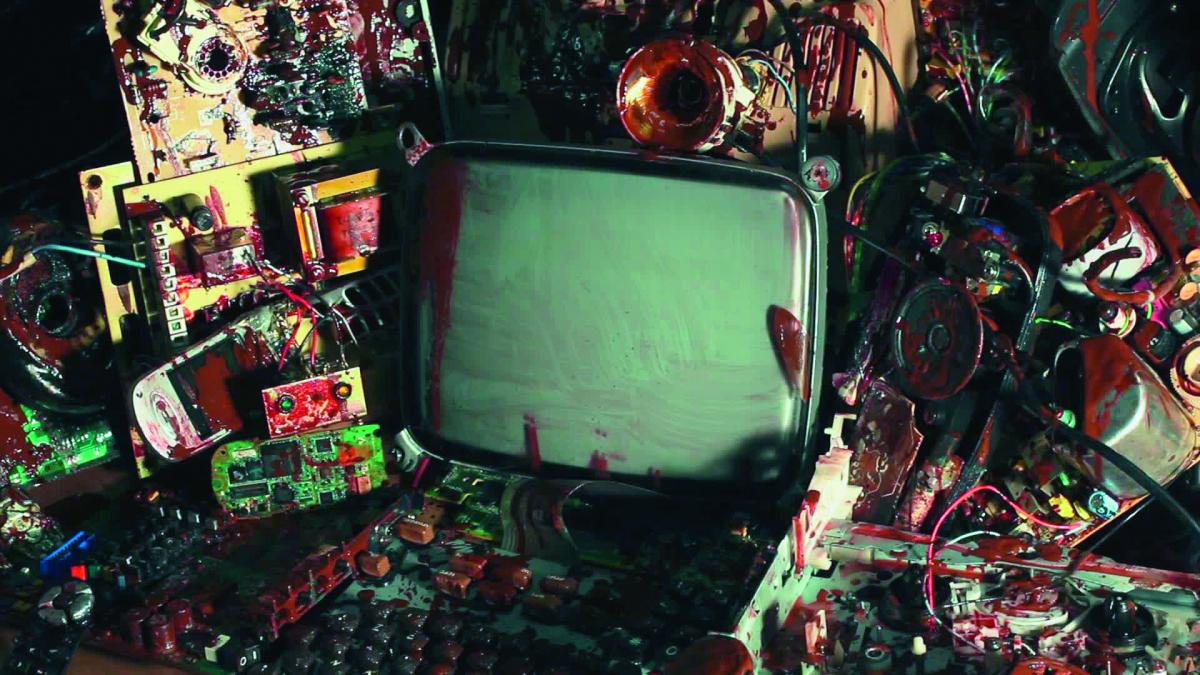
Ox Blood Can Mean a Lot of Things
«Images can hit harder than war», writes the music video director Christophe Thockler. Here, he reports about the shoot of the song «Arterial» from the Electronica musician Lusine for which he used real ox blood. From the Norient book Seismographic Sounds (see and order here).
Butcher: «You are a vampire?»
Director: «No, no! I am only a director.»
The butcher looked very strangely at me when I asked him to give me five liters of ox blood. Electronica musician Lusine from Seattle had approached me: «Let’s do a video with blood!» To make a dark and gloomy music video had been my plan for a while, so I found myself in the butchery, really excited. You have to respect the material. The video needed to be real.
I dribbled and poured blood over old harddisks and screens, mobile phones and other electronic waste, and I shot seven thousand photos and thirty minutes of video over several weeks. Filming it felt like a militant creative act, but it was not easy. You can keep ox blood in the fridge for several days, but when working with it on a film set you have to be quick – the blood stank under the hot lights. It was pretty disgusting!
I call the result an electro-organic video. You can watch it aesthetically, enjoying poetic images, or you can also find hidden irony: the blood seems only to power these computers so that in the end they can screen the credits of Lusine and me. You can judge blood either as something you ignore and fear, or as the essence of life – someone told me that this video is celebrating life. You can ask philosophically: Are computers powered by blood? Or are computers bleeding? Furthermore, you can recognize historical links with cyberpunk, in which machines and humans melt. I really like to use the evocative power of images to help the viewer create his own story.
I hope «Arterial» has the potential and power to mean all of these things. I prefer artworks open to multiple readings to ones with clear and heavy-handed statements. Inspiration for this video came from sci-fi movies and from directors of the 1920s who played with the minds of their viewers. They showed that putting images next to each other is an inherently political act. The power of images can be more violent than an act of war. They are much more subtle. If they manage to trigger big questions or truths, they can hit much harder than war.
Statement recorded by Thomas Burkhalter on 2.4.2015 via Skype. The text was published first in the second Norient book Seismographic Sounds.
Biography
Shop

Published on February 11, 2018
Last updated on April 29, 2024
Topics
What happens when U.S.-blogger collects african music and offers it for free? What is the difference between «textually signaled» and «textually unsignaled»?
How does Syrian death metal sound in the midst of the civil war? Where is the border between political aesthetization and inappropriate exploitation of death?